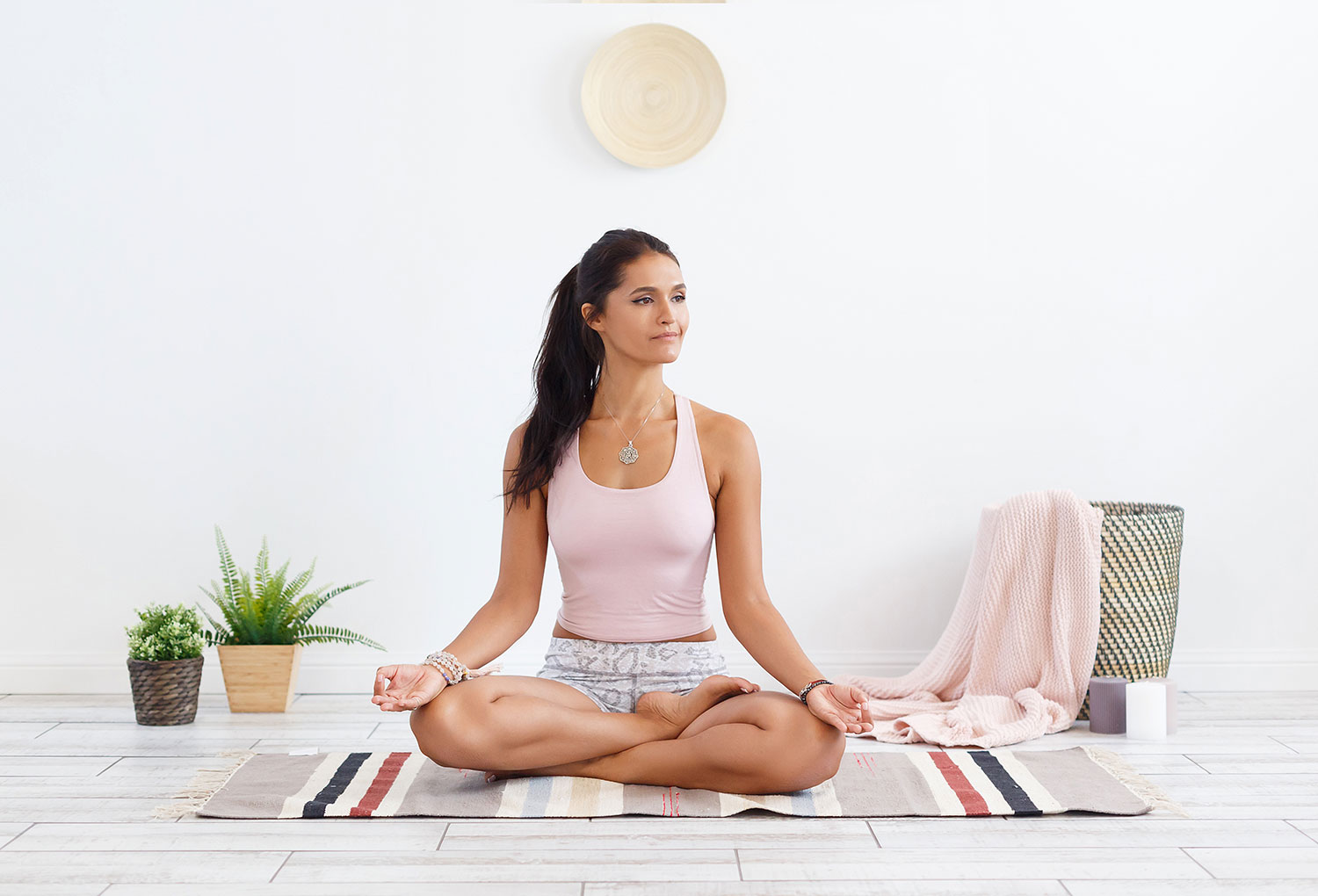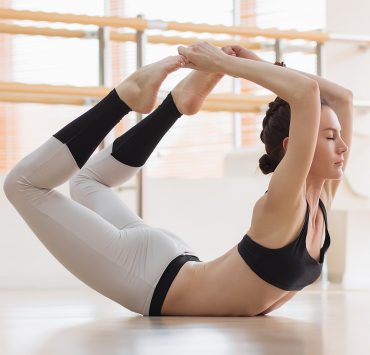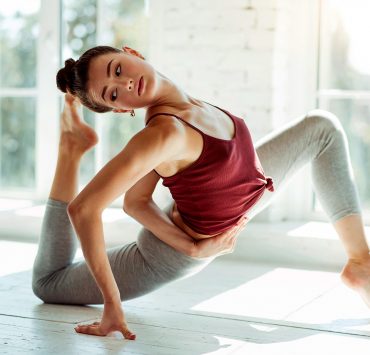
Susan views the world through a lens of spirituality, health,…
As a new yoga teacher, sometimes teaching yoga asana to beginners can be more challenging than teaching a class of yoga students who are already experienced with the poses. New to yoga students may often be overwhelmed with so many new names and movements to remember during class. Budding yoga practitioners look to the yoga teacher to guide them safely and mindfully. Here are some reminders to help yoga teachers guide effective yoga classes for beginners that will keep them coming back.
Things To Remember About New Yoga Practitioners
New yoga students may not be familiar with any of the yoga pose names in either English or in Sanskrit. But that doesn’t mean you should shy away from using the pose names in your class either. Concise cues and repetition of the proper asana names will help new students remember the poses more easily and ease them into a regular yoga practice more quickly.
How To Teach A Beginner’s Yoga Class

A beginners yoga class does not need to be overly simplistic. But it would be helpful to include a few yoga poses which new yoga students will encounter in many more classes as they progress through their yoga practice. Here are 15 yoga asana that beginners should know yo help them get a head start in their journey through the world of yoga asana.
15 Poses To Include In A Yoga Class For Beginners
Sukhasana — Easy Seated Pose

Sukhasana is such a quintessential yoga pose that there’s even an emoji for it! Literally translated as Easy Seated Pose, this asana is a non-intimidating way to start a beginner yoga class because all they have to do is sit comfortably with a straight spine and hands relaxed on their knees or thighs.
Always offer support using yoga blocks or pillows under the knees or to sit on for students whose hip flexors are not quite open enough to stay comfortable in the pose.
Balasana — Child’s Pose

Balasana is a beginner yoga pose that all new yoga students should know. In Child’s Pose, the body gets to enter rest and restore mode which is important in-between stronger asanas and more active vinyasa sequences.
Offer a more relaxed version of Child’s Pose by cueing students to keep their big toes together and knees apart wide enough for their chest and forehead to rest on the floor. Remind students that if their sit bones lose contact with their heels as they fold forward, they should back off from going to deep into the pose and focus on getting a proper foundation first.
Marjaryasana — Cat-Cows Pose

Cat and Cow spinal stretches while on all fours, or Tabletop, will not only promote mobility in the spine, but also gentle strengthening of the wrists and movement in the hips.
Allow beginners to fully explore these yoga poses by encouraging them to move with their own breath as they arch their spine upwards and downwards. Many new yoga students respond well to the cue to imagine the heart being pulled to the front of the room on the inhale, and up towards the back of the spine and the ceiling on the exhale.
Twists

Twists are good to incorporate both at the start and end of a beginner yoga class to help decompress the spine and allow release and relaxation.
Seated twists like Ardha Matsyendrasana, Half Lord of the Fish Pose, are said to stimulate digestive fire, massage the internal organs, and energize the spine. So it’s a good way to wake up the body at the beginning of a class. The shape is said to resemble that of a fish which is one of the avatars of Lord Vishnu.
Towards the end of a yoga session, reclined twists like Supta Matsyendrasana, Supine Lord of the Fish Pose, can be grounding and relaxing. It helps beginners in yoga quiet the mind and calm the body.
Tadasana — Mountain Pose

To an observer, Tadasana, or Mountain Pose, looks like you’re just standing up straight. But, just as the name of the pose suggests, you are meant to embody a mountain as you practice this pose.
You may try to cue students as they practice Tadasana by first focusing on their Pada Bandha — their foot look — or connection of their body to the ground through the soles of their feet. Once a solid grounding is created, energetically feel the body standing tall through the legs and spine. Imagine the strength and height of a mountain connecting both earth and sky.
Adho Mukha Svanasana — Downward Facing Dog Pose

Adho Mukha Svanasana, or Downward Facing Dog, comes so naturally to our canine friends, but not so intuitively for some humans. To teach this yoga pose to beginners, have them set up in Tabletop first and cue them to spread their fingers as wide as they can while gripping the floor with the pads of their fingers.
Next, tuck in the toes and on the exhale, push the hips back and up so the tailbone points to the sky, while the spine remains straight. Some students might have tight hamstrings so give the option of keeping the knees bent and heels off the floor if needed.
Phalakasana — Plank Pose

Plank pose helps to strengthen and stabilize the entire body. Start by cueing students similarly to Downward Facing Dog, starting in Tabletop with the hands directly underneath the shoulders and fingers spread out wide to grip the floor.
Extend both legs towards the back end of the mat and stay liften on the balls of the feet. Keep the spine straight by engaging the core, pushing the ground away from the body, and very slightly tucking in the tailbone to point towards the back of the room. It may help to cue students to visualize a straight line from the crown of their head, extending all the way down to the heels of their feet.
Virabhadrasana 1 — Warrior 1 Pose

Virabhadrasana is a yoga pose that yoga practitioners will encounter as part of the Surya Namaskar, or Sun Salutation, series. To set up into it from Tadasana, step one leg back and lower the heel, rotating it so the toes point about 45 degrees towards the outside of the mat. Advise beginner yoga students to look down and check that their heels are one the same plane as their hip bones.
The front leg will be bent but the knee should never extend past the toes. Encourage students to slightly push the front knee outwards as well so that the leg does not collapse inwards towards the center of the mat.
Raise the arms up overhead so that the hands are in line with the shoulders and palms face each other. Since this is an asymmetrical pose, cue students the same way for the opposite leg too.
Virabhadrasana 2 — Warrior 2 Pose

Virabhadrasana 2 is an open hip version of Warrior 1. To transition into it from the first warrior lunge, shift the feet so that the heels are in one line on the mat. Open up the arms and the hips so that the body is facing the long edge of the mat.
Keep the hands in line with the shoulders and look over the fingers of the front hand. Just as with Warrior 1, the kbee should not go past the toes and the leg must be kept strong and stable to prevent it from collapsing inwards.
Vrksasana — Tree Pose

Tree Pose is an excellent way to check if students are staying mindful and present. It is one of the first beginner yoga poses to challenge balance.
Allow students to find their own comfortable expression of the asana. Whether the sole of their lifted foot is pressed against the inner thigh, on the calf, or with the toes still touching the floor to maintain balance.
Keep an eye out for students that might be pressing their foot against their knee and cue them to bring their foot either higher or lower than the knee to prevent injury.
Supta Kapotasana – Reclining Pigeon Pose

Many hip opener yoga poses are too much for beginner yoga classes. But reclined Pigeons allow students to control the depth of the pose according to their own hip flexor capability.
From laying on the back, cue students to cross the ankle of one leg over the thigh of the other leg, forming a figure four. The foot of the crossed leg must be kept flexed to protect the knee as the hips open.
For some, this stage of the pose is already enough. Those who can go deeper may thread their hands between the legs and interlace their fingers under or over the knee to bring the ankle closer to the chest.
Remind students to respect the range of motion where their body is at and not to force their legs or hips into and shape it is not ready for yet.
Makarasana — Crocodile Pose

This is a restful pose that is done on the belly. It’s a good pause to add between floor series poses, especially active backbends like Locust pose or Bow pose.
While laying on the belly, extend the arms forward and lay one hand on top of the other, forming a triangular shape that resembles a crocodile’s head and mouth. Keep the big toes together and allow the heels to relax and fall outwards.
Setu Bandhasana — Bridge Pose

Bridge is a beginner’s backbend which can be supported with a block or stay active with the hips pushing up and the things squeezing together.
Whether you add this pose as a supported or active backbend, cue students to tuck in the tailbone to elongate their spine, even while they are in a backbend.
Apanasana — Wind Removing Pose

A wind removing pose is recommended by many traditional yoga teachers at the end of a class because it is believed to remove stale or stagnant air in the body that may cause heaviness or imbalance and disease.
The simplest Apanasana variation is to hug both knees towards the chest with the head remaining on the floor. Some people like to rock gently from side to side to massage their back while in this pose.
Savasana — Corpse Pose

Final Savasana is an important pose in a yoga series but many students will try to cut the class short by skipping Corpse Pose. But encourage students to stay by reminding them that in complete relaxation, the body enters rest and repair mode so it is really during Savasana that the benefits of a yoga asana practice is reaped.
It may help to cue students with guided relaxation as they close their eyes and meditate in Savasana.
Conclusion
It may seem overwhelming to think of how to teach yoga to beginners. But sticking to these 15 must-know yoga poses will give a solid foundation that any level of yoga practitioner will find space to go deeper and continue a regular practice.
What's Your Reaction?
Susan views the world through a lens of spirituality, health, and compassion. Her positive outlook on life shines through her writing, which is heavily focused on yogic living, meditation, and conscious eating.














